How to Develop a Marketing Communications Strategy that Works (Template)
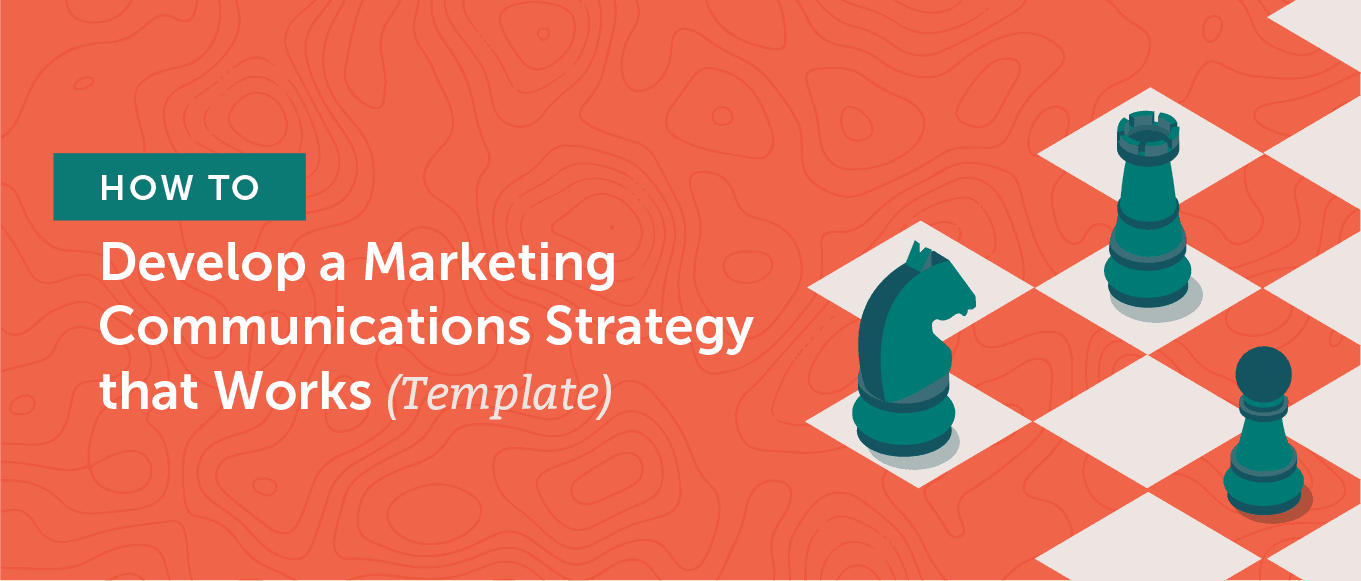
How to Develop a Marketing Communications Strategy That Works (Template)
Click To Tweet- Speak directly to your ideal customer’s pain point instead of addressing a vague audience.
- Align your messaging to each channel based on what your target customers already expect on it.
- Build an easy-to-reference marketing communications document, so your team, other teams, and future hires can use it with ease.
Marketing Communications: The Definition
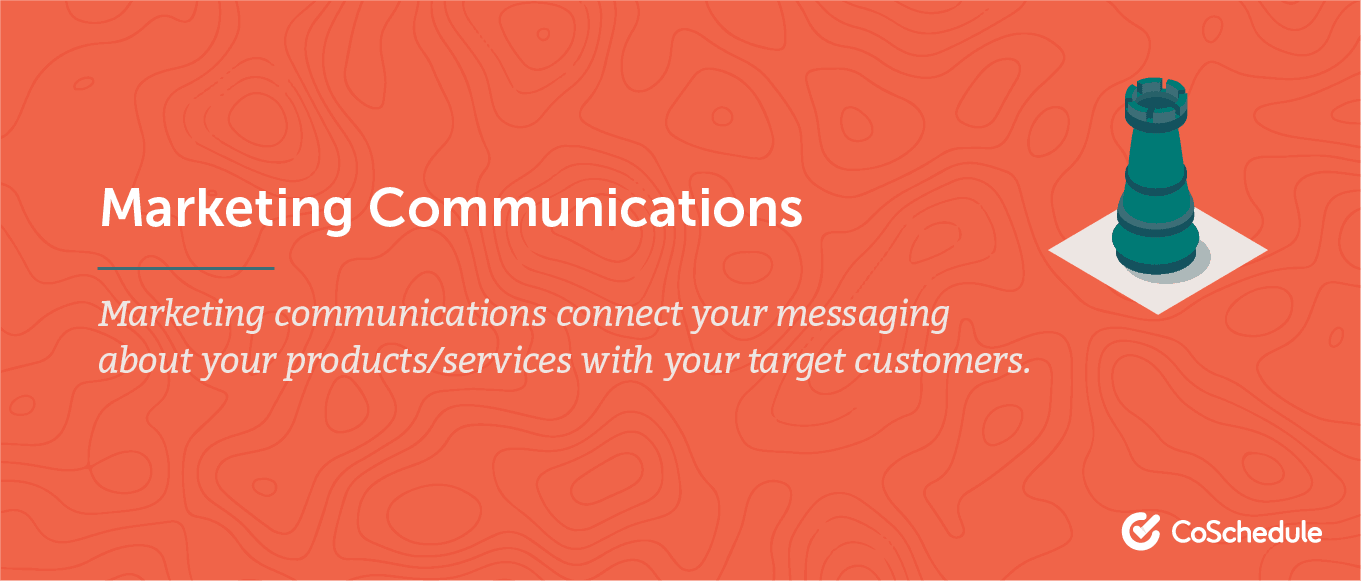 A marketing communications strategy depends on four elements:
A marketing communications strategy depends on four elements:
 Your marketing communication strategy is a set of tools and processes. It will help you deliver the right marketing message, to the right person, at the right time, and through the right channel. This is also its key benefit, which we’ll dive into in a moment.
It supports your marketing and business goals, including everyday marketing activities as well as product launches, limited-time promotions, hiring goals, partnerships, and more.
Your marketing communication strategy is a set of tools and processes. It will help you deliver the right marketing message, to the right person, at the right time, and through the right channel. This is also its key benefit, which we’ll dive into in a moment.
It supports your marketing and business goals, including everyday marketing activities as well as product launches, limited-time promotions, hiring goals, partnerships, and more.
Why You Need a Marketing Communication Strategy
Here’s the thing: you could just publish what feels best at any given moment. At times, that might work. More often than not, this approach won’t get you where you want to be. You’ll miss your goals, and you’ll even struggle to analyze and understand what went wrong. Here’s why having a marketing communication strategy helps you avoid this scenario.The Right People Will Get the Right Message at the Right Time and Place
The important thing about this benefit is that all four parts need to be fulfilled in order for the marketing communication strategy to work.- People (your audience)
- Message (what you’re saying/selling)
- Timing (day, week, month, season, etc.)
- Place (channel you chose)
- People: Primarily newlyweds, young families, and new homeowners
- Message: Customizable furniture to match spaces of all shapes and sizes
- Timing: Evenings and weekends
- Place: Instagram and YouTube
 In other words, it’s not that people who want to buy home decor aren’t on LinkedIn; it’s just that they aren’t on LinkedIn for that reason.
Another mistake this fictional home goods store could make is to consistently publish on weekdays at 10 a.m. Their target audience loves home decor projects, but they focus on them after work and on weekends. That means they entirely miss this content during the week.
In other words, it’s not that people who want to buy home decor aren’t on LinkedIn; it’s just that they aren’t on LinkedIn for that reason.
Another mistake this fictional home goods store could make is to consistently publish on weekdays at 10 a.m. Their target audience loves home decor projects, but they focus on them after work and on weekends. That means they entirely miss this content during the week.
Maintain Brand Consistency on Every Channel
Lucidpress analyzed the state of brand consistency and found that:- Brands with consistent branding expect to earn 23% more annual revenue than inconsistent brands.
- Brands that are consistently presented to consumers are four times more likely to experience brand visibility.
If your online presence is inconsistent, you risk confusing your potential customers and losing them for good.
Click To TweetDrive Business Growth By Delivering Value to Potential Customers
Want to show your potential customer how you can make a difference in their life? One of the hardest ways to do that is to use the same, generic message — regardless of how focused it is on their pain point or how aware they are of you and your product. In other words, if a sales person called you and interrupted your family dinner, you’d have a very different conversation if they’re from a company you’ve never heard of compared to the one from a company you’ve been buying from for a decade. Although the content marketing funnel is far from linear, it can still be divided into the top, middle, and bottom. Your marketing communications strategy will help you tailor your message based on where your target customer sits in the funnel. This way, you will deliver value to your future customer and support your company’s launches and sales goals.
Your marketing communications strategy will help you tailor your message based on where your target customer sits in the funnel. This way, you will deliver value to your future customer and support your company’s launches and sales goals.
Plan Your Marketing Communications Strategy in Six Simple Steps
Follow these steps to build out your marketing communications strategy. Remember, this isn’t supposed to be a weeks-long process and a 75-page document. It should be an easy-to-reference, straightforward document that guides your marketing activities across all your channels.1. Identify Your Target Market
Your target market is the distinct group of people you want to reach with your marketing message. Focusing on your target market, instead of trying to sell to everyone, lets you get specific with your messaging and smart about where you invest your marketing budget. People in your target market are far more likely to buy from you than those outside of it. Here’s some criteria you can use to define your target market.- Industry
- Income/revenue
- Business size
- Level of expertise
- Location
- Education level, age, and gender
 In other words, they’re tailoring all their marketing communications and products to the budget and needs of smaller law firms — which are significantly different to the budget and needs of a law firm with thousands of employees.
Consider the pain points to which your content and your business speaks; list all the common traits of people who find it useful. That’s your addressable market — the people you can turn into your customers.
In other words, they’re tailoring all their marketing communications and products to the budget and needs of smaller law firms — which are significantly different to the budget and needs of a law firm with thousands of employees.
Consider the pain points to which your content and your business speaks; list all the common traits of people who find it useful. That’s your addressable market — the people you can turn into your customers.
2. Identify Your Target Customers
Your target market can include one or more types of your target customer. Your next step is to define them. To define your target customer, dive into the specifics such as their:
To define your target customer, dive into the specifics such as their:
- Current job title (if applicable)
- Goals (in your field or in their job — if B2B)
- Pain points and challenges
The key is to focus on the why for each of your target customers. What hurts enough to make them look for a remedy?
Click To Tweet- Who are our best customers?
- What qualities and behaviors do these customers share?
- What made them search for a solution like ours?
- What is the outcome these customers want to accomplish?
- Why have they chosen us instead of our competitors?
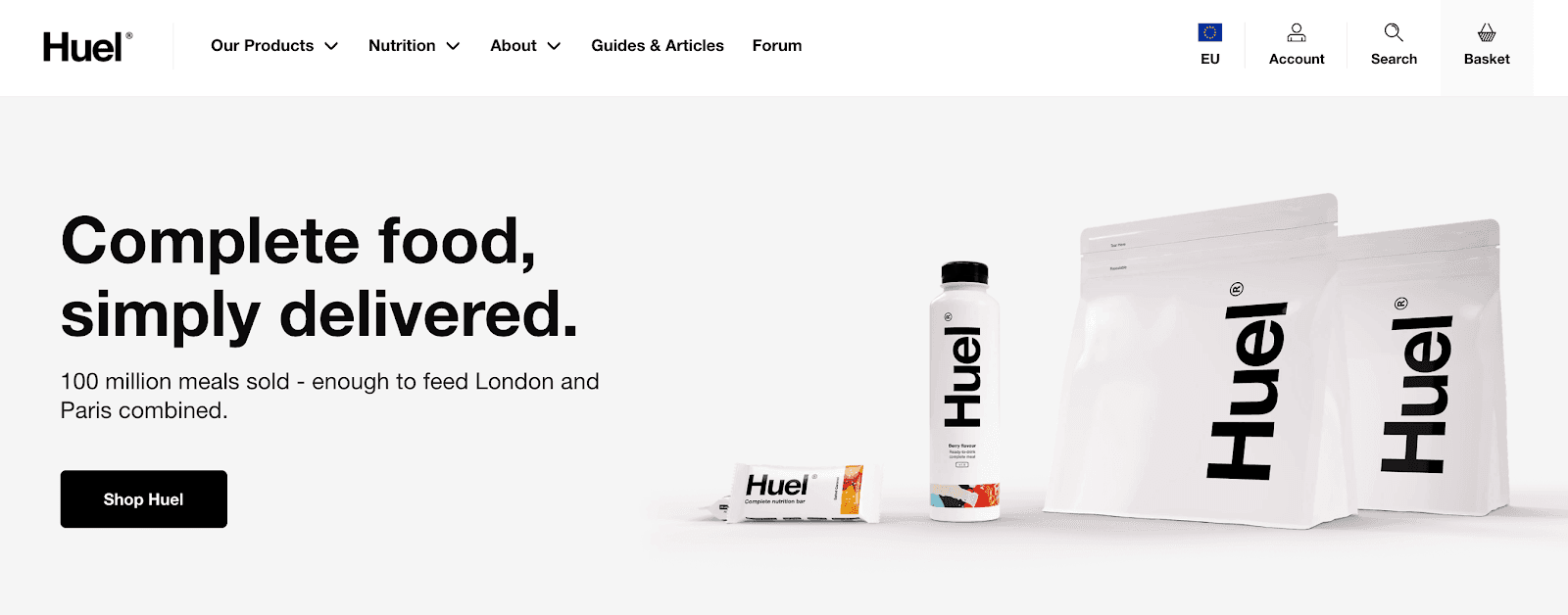 Their founder said they have two main types of target customers.
Their founder said they have two main types of target customers.
- Target customer 1: People who want to eat well and have food ready quickly. They want to avoid the hassle of lengthy cooking and always having the right food in their cupboard. They don’t want to end up eating junk food just because it’s faster to get.
- Target customer 2: People who want to lose weight and/or eat healthier. They’re intimidated by calorie-counting a large variety of foods and struggle to consistently put in the effort to do it.
3. Identify Your Unique Selling Proposition
You may be tempted to skip this step, but power through it — it will help you be specific in the following steps. Your unique selling proposition (USP), also called unique value proposition (UVP), is the core benefit or solution that differentiates your product or service from the competition. It positions you as the best option on the market. The only case in which you wouldn’t need a unique selling proposition is if you don’t have any competitors in your market. My guess is that you do.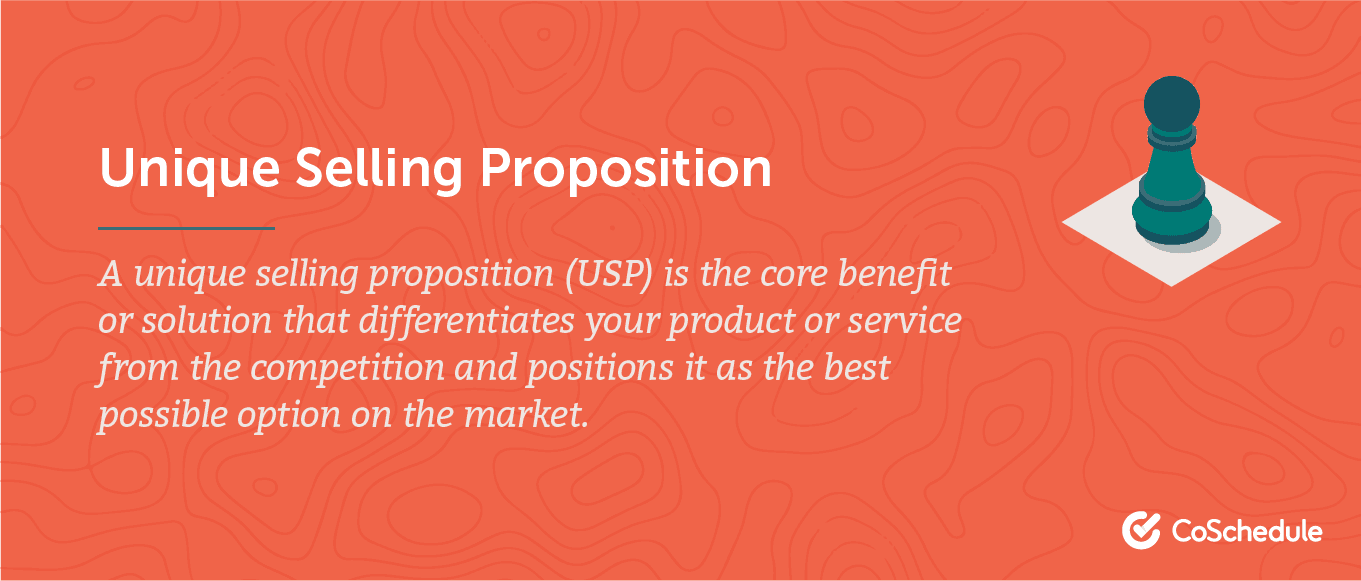 Here are some questions to consider when you’re creating your unique selling proposition.
Here are some questions to consider when you’re creating your unique selling proposition.
- How does your product solve your customer’s pain point or improve their situation?
- What are the specific benefits of your product?
- Why should customers buy from you and not from your competition? What is your unique differentiator?
- Domino’s Pizza – Fresh, hot pizza delivered in 30 minutes or less, guaranteed.
- Allbirds – The comfortable shoe that’s easy on the planet.
- Kiva.com – Loans that change lives.
- M&Ms – The milk chocolate that melts in your mouth, not in your hand.
- CoSchedule – Organize all of your marketing in one place, from any place.
- Company culture USP from Buffer, “We're a small team on a mission to help innovative companies grow their businesses — and along the way, we're championing a more human way to work.”
- Hiring USP from Intercom, “We help the people behind internet businesses talk to their customers — like people. We’re always looking for the right people to make that happen.”
4. Match Your Audience Problems to Your Product Solutions
Now, map the pain points you identified in the second step with the solutions you offer. A quick and easy way to do this is by creating and filling out a customer problems/product solutions messaging matrix. In a blank table, fill the first row with your offerings. Then, fill the first column with all the customer pain points you’ve identified. You’ll end up with a matrix that looks like this: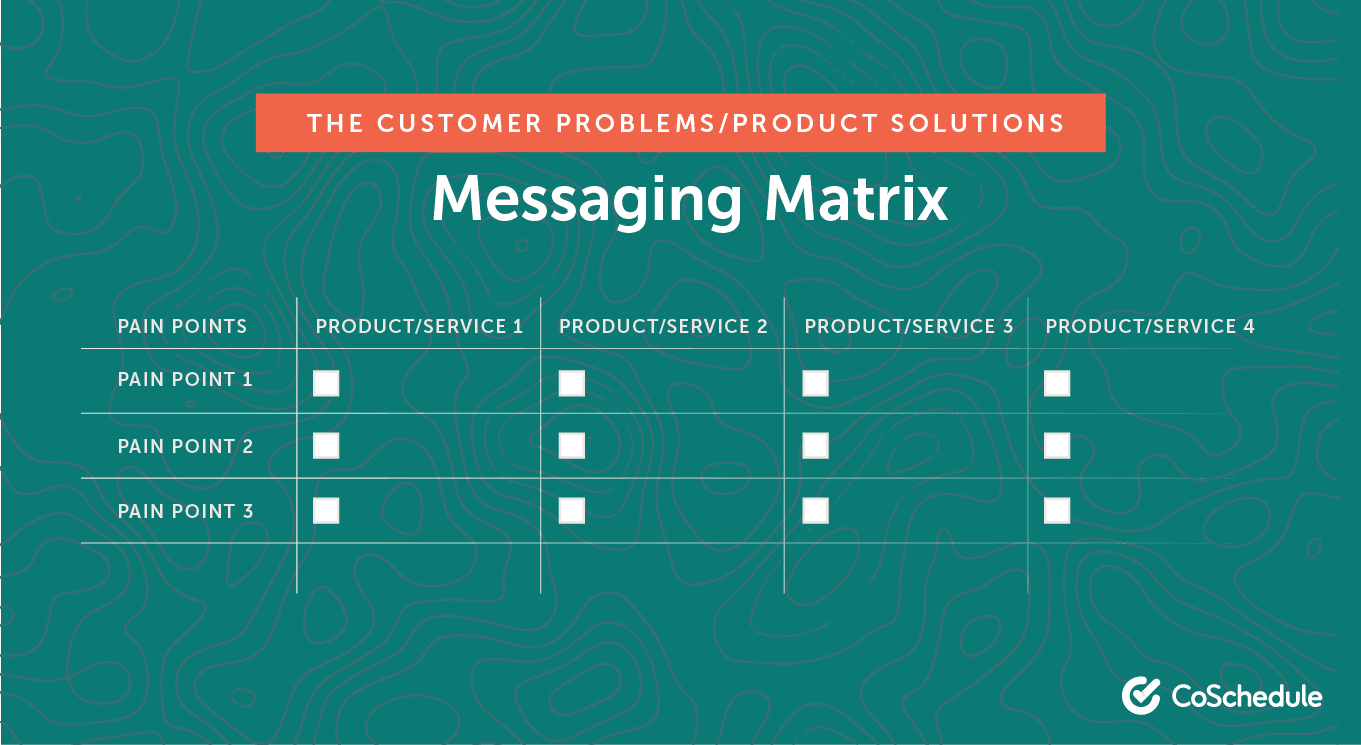 5. Match Your Messaging to Channels You Choose
Then, add a check mark to each pain point/offering match. Once you’re done, make this matrix available company-wide. This will help you align your product-focused messages with customer pain points, not only on your promotional channels, but also sales calls, customer emails, trade shows, and anywhere else you talk about what you do.
For your aligned messaging to work, you need to map it to your channels.
5. Match Your Messaging to Channels You Choose
Then, add a check mark to each pain point/offering match. Once you’re done, make this matrix available company-wide. This will help you align your product-focused messages with customer pain points, not only on your promotional channels, but also sales calls, customer emails, trade shows, and anywhere else you talk about what you do.
For your aligned messaging to work, you need to map it to your channels.
For your aligned messaging to work, you need to map it to your channels.
Click To Tweet Next, define the focus of your content in order to reach your target customers and communicate your unique selling proposition.
Use this list as a starting point.
Next, define the focus of your content in order to reach your target customers and communicate your unique selling proposition.
Use this list as a starting point.
- Top of the funnel content: educational, valuable, and pain-focused content
- Middle of the funnel content: content that helps your target customers identify solutions
- Bottom of the funnel content: conversion-focused content that helps customers make a purchase decision
- Company culture content
- Hiring-focused content
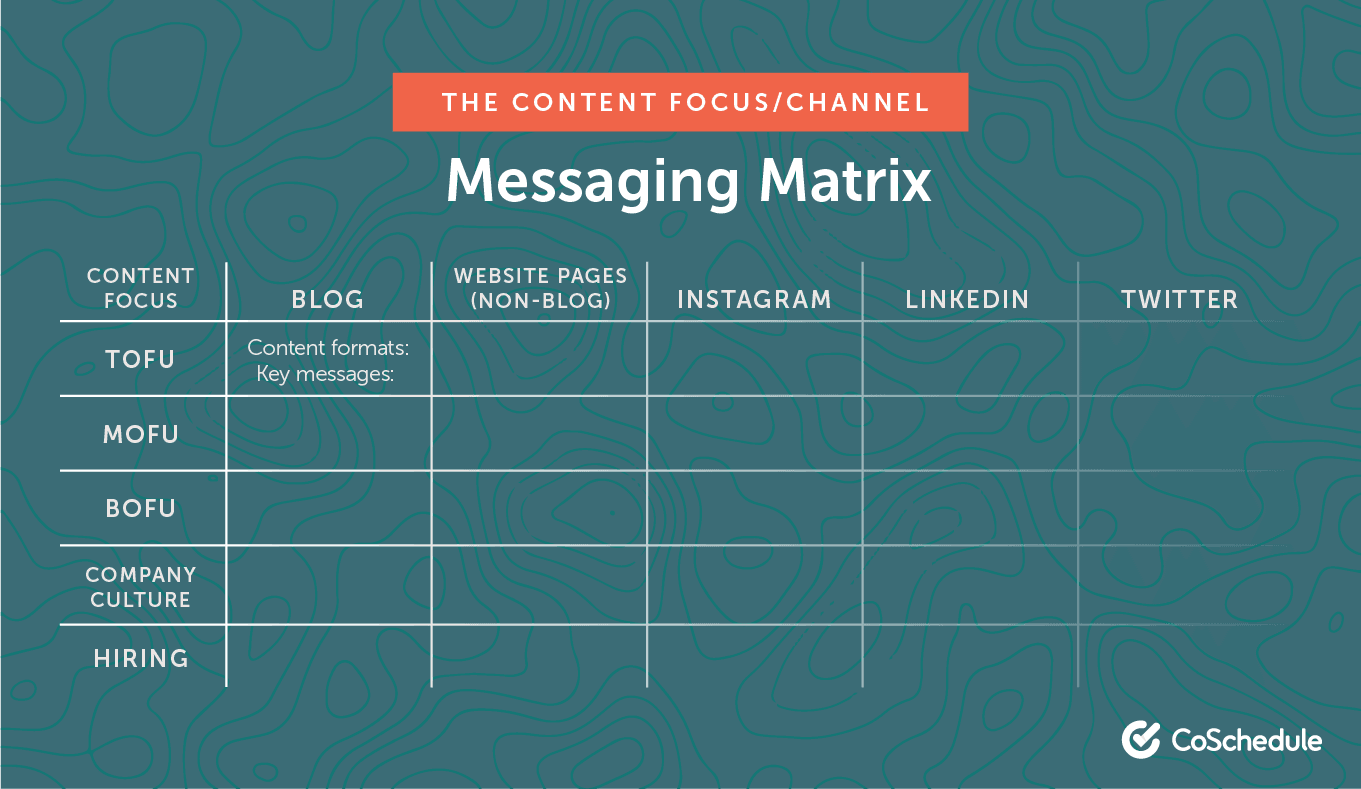 Here are some examples of formats that work well in these combinations of focuses and channels. You can use these as inspiration and simply add your key messages based on your USP, your target customer pain points, and goals.
Here are some examples of formats that work well in these combinations of focuses and channels. You can use these as inspiration and simply add your key messages based on your USP, your target customer pain points, and goals.
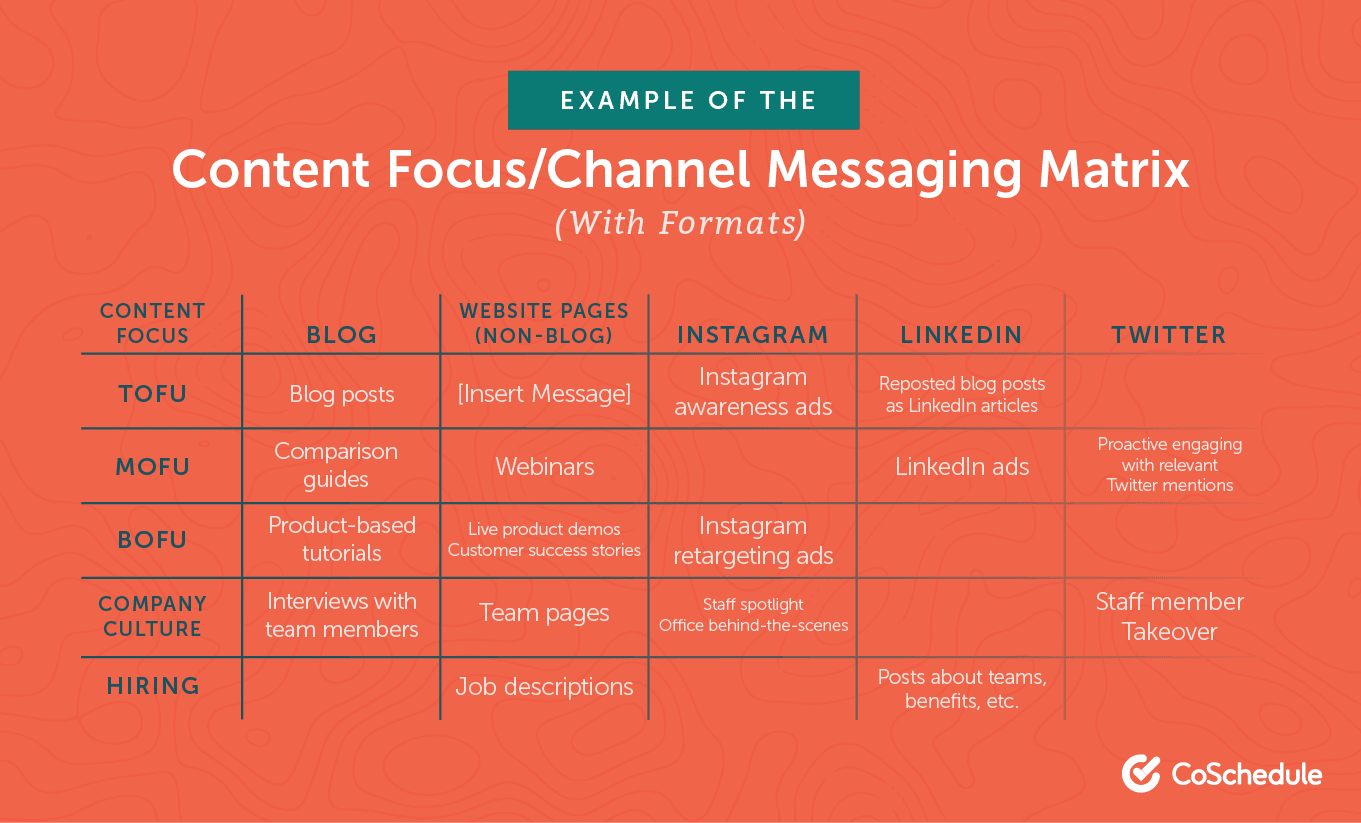 CoSchedule’s Marketing Calendar lets you handle all of your marketing from a single place. This includes the overview of all channels and campaigns on one calendar, drag-and-drop flexibility in case something unexpected comes up, and reporting to your boss and other teams.
In other words, nothing will ever slip through the cracks or not make sense again.
CoSchedule’s Marketing Calendar lets you handle all of your marketing from a single place. This includes the overview of all channels and campaigns on one calendar, drag-and-drop flexibility in case something unexpected comes up, and reporting to your boss and other teams.
In other words, nothing will ever slip through the cracks or not make sense again.
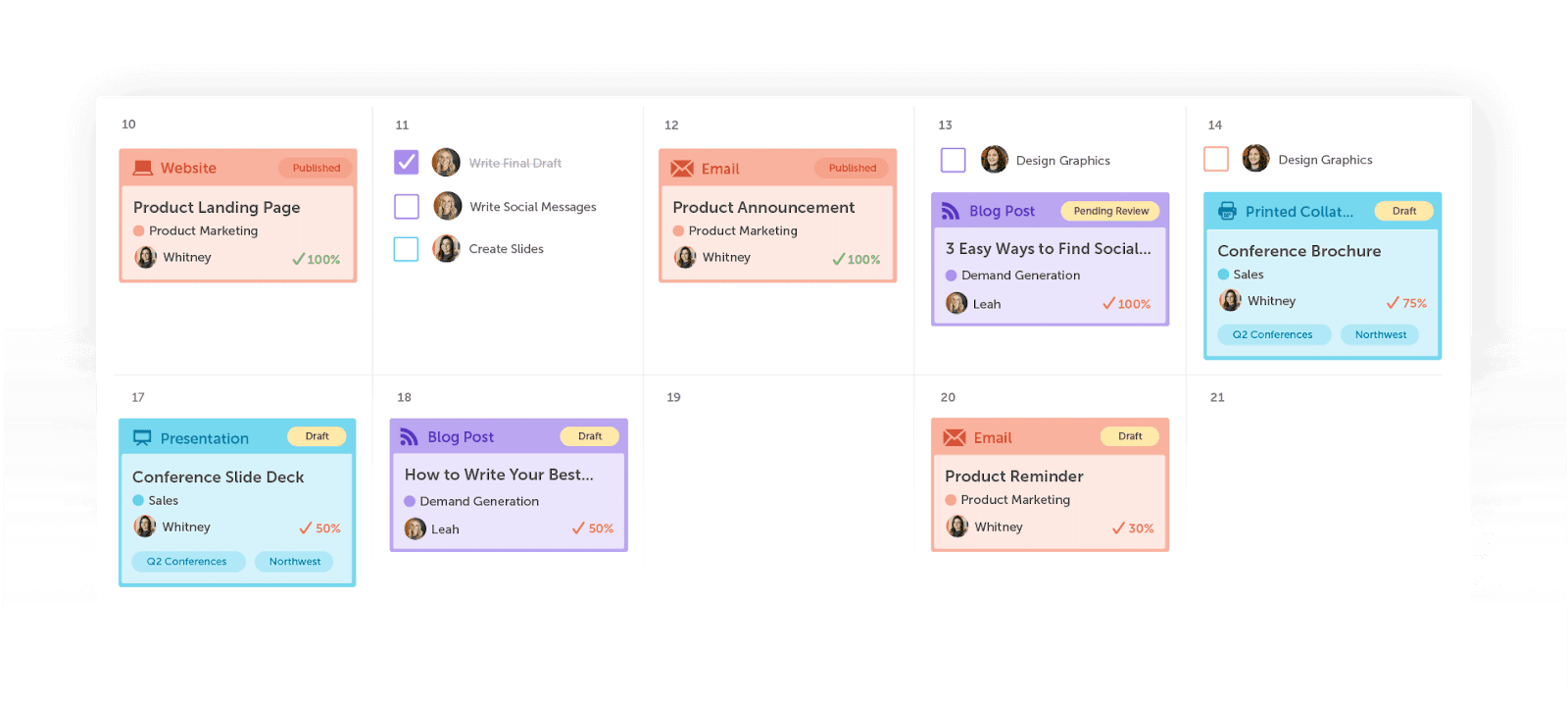
6. Set Your Goals and Identify a Way to Measure Them
As we defined in the beginning, your marketing communications connect your messaging about your products/services with your target customers. To know if your marketing communication strategy is working, you need to know how to measure it. An easy way to do that is to clarify:- Your business goals (such as revenue), which are supported by
- Your marketing goals (such as lead generation, new sales, repeat sales), which are supported by
- Your reach and engagement
- Your blog traffic
- Your social media reach
- Your social media engagement (such as clicks, comments, and direct messages)


